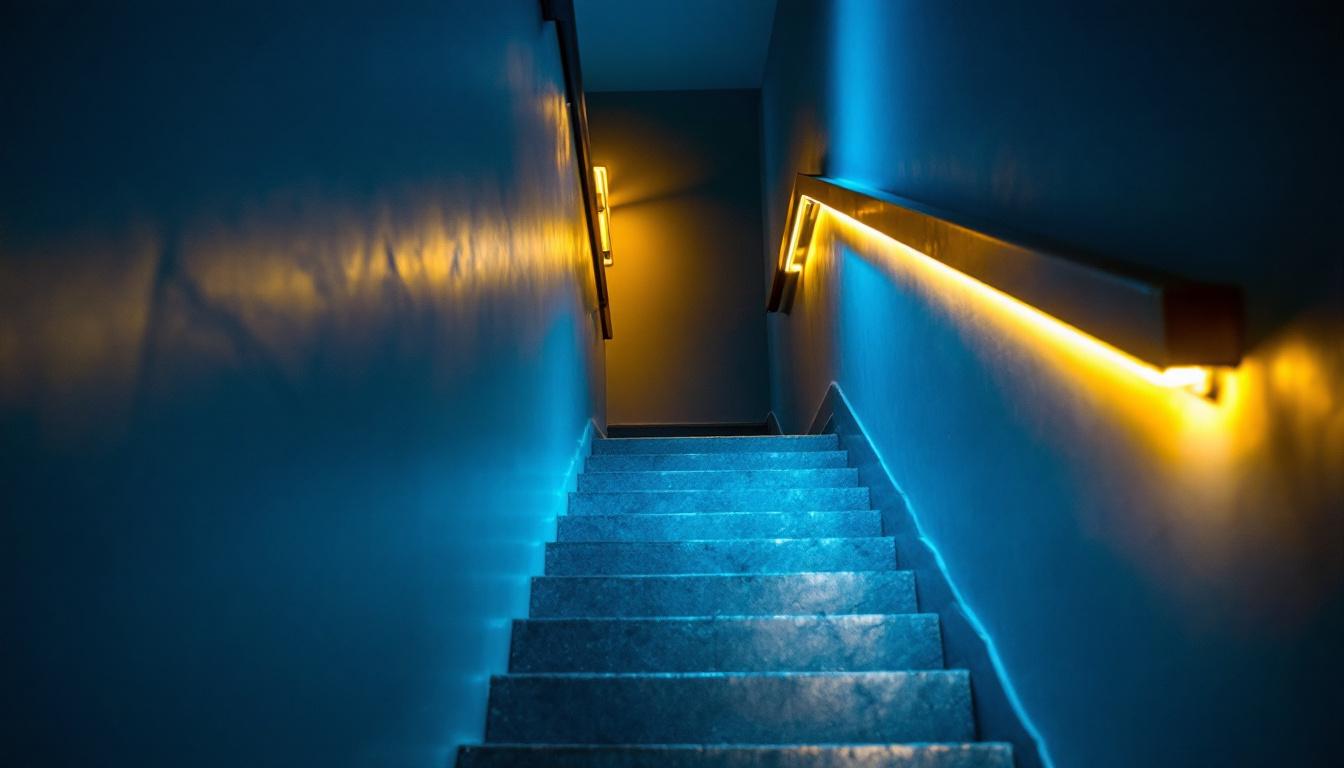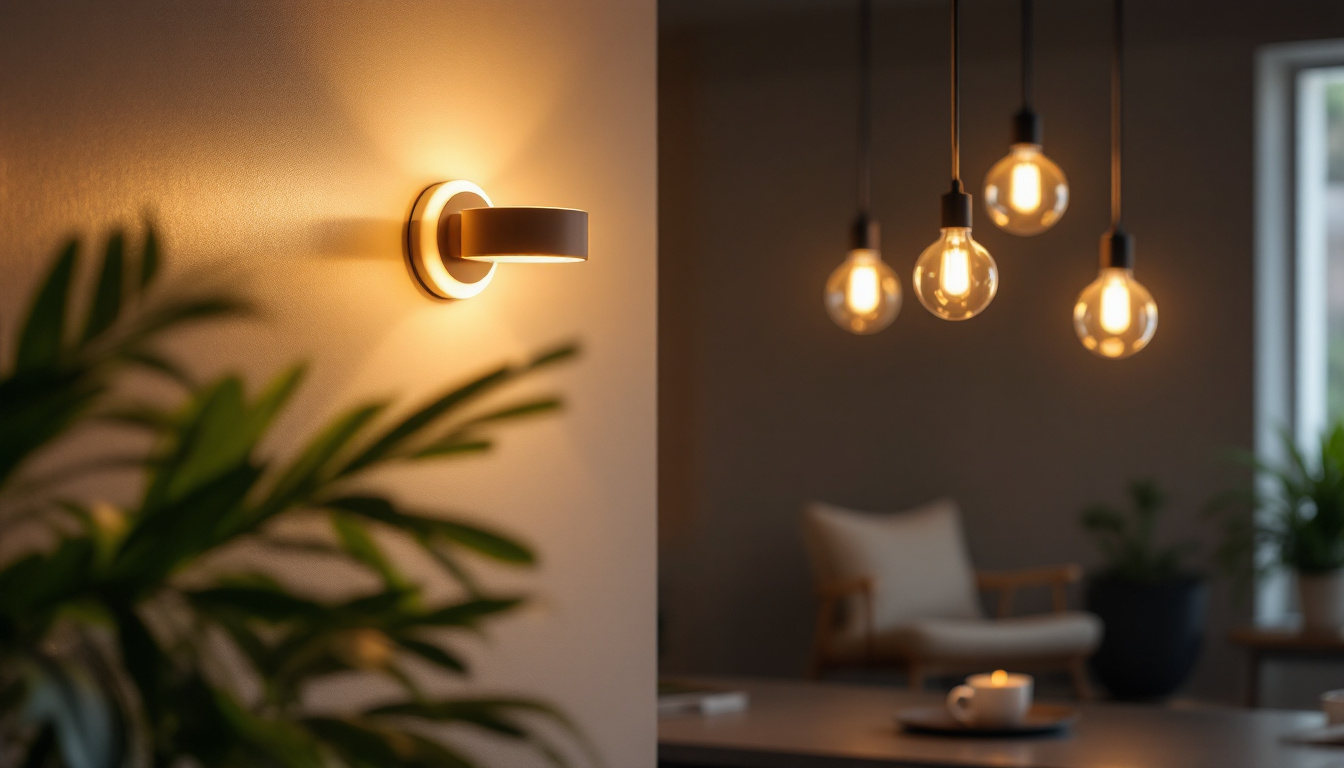
Basement stairways are often overlooked when it comes to lighting design, yet they play a crucial role in both safety and aesthetics. For lighting contractors, understanding the importance of effective basement stairway lighting is essential for delivering quality service to clients. This article explores the significance of proper lighting in these often-neglected areas, the challenges faced, and the best practices that can enhance both functionality and style.
Basement stairways are typically dark and confined spaces, which can pose safety risks if not properly illuminated. Adequate lighting not only helps prevent accidents but also enhances the overall appeal of the home. For lighting contractors, being able to provide a range of lighting solutions tailored to basement stairways can set them apart in a competitive market.
Safety is the foremost concern when it comes to basement stairway lighting. Poorly lit stairways can lead to slips, trips, and falls, which can have serious consequences. Ensuring that each step is well-lit helps to guide individuals safely up and down, reducing the risk of accidents. Lighting contractors must be aware of the various options available, from recessed lighting to wall sconces, that can effectively illuminate these areas.
In addition to preventing accidents, proper lighting can also help individuals navigate the space more confidently. A well-lit stairway can provide a sense of security, especially in homes where occupants may be unfamiliar with the layout. This is particularly important in multi-level homes where guests may need to traverse the basement stairway. Moreover, incorporating motion-sensor lights can further enhance safety by automatically illuminating the area as someone approaches, ensuring that the path is always visible without the need for manual switches.
Beyond safety, lighting also plays a significant role in the aesthetic appeal of a basement stairway. A well-designed lighting plan can transform a dull, utilitarian space into an inviting and visually appealing area. Lighting contractors have the opportunity to enhance the architectural features of the stairway, using light to create depth and highlight textures.
Incorporating decorative fixtures or adjustable lighting can add character to the stairway, making it a focal point rather than just a passageway. This is particularly important in homes where the basement is used as a living space, as it contributes to the overall ambiance of the environment. Additionally, the choice of light color temperature can influence the mood; warmer tones can create a cozy atmosphere, while cooler tones can lend a more modern and spacious feel. By thoughtfully selecting the right fixtures and placements, lighting contractors can create a harmonious blend of functionality and style, ensuring that the stairway is both safe and visually appealing.
While the benefits of adequate lighting are clear, there are several challenges that lighting contractors may face when designing lighting solutions for basement stairways. Understanding these challenges is crucial for creating effective and efficient lighting plans.
Basement stairways are often narrow and confined, which can limit the types of lighting fixtures that can be installed. Traditional overhead lighting may not be feasible, and contractors must think creatively to find solutions that fit within the limited space. This may involve using wall-mounted fixtures or recessed lighting to ensure that the area is adequately illuminated without overwhelming the space.
Additionally, the height of the ceiling can also pose a challenge. Low ceilings may restrict the use of certain types of fixtures, necessitating a focus on more compact lighting solutions. Lighting contractors must be adept at assessing the space and recommending options that provide sufficient light without compromising the functionality of the stairway. Furthermore, the choice of light color temperature can significantly affect the perception of space; warmer tones can create a cozy atmosphere, while cooler tones may enhance visibility, making it crucial for contractors to consider the psychological impact of their lighting choices.
Another challenge in basement stairway lighting is the electrical setup. Many basements may not have adequate wiring to support additional lighting fixtures, especially if the area was not originally designed with lighting in mind. Lighting contractors must be skilled in assessing the existing electrical infrastructure and determining whether upgrades or modifications are necessary.
In some cases, it may be necessary to install new circuits or run additional wiring, which can complicate the project and increase costs. Being knowledgeable about local electrical codes and regulations is essential to ensure that all installations are safe and compliant. Moreover, the integration of smart lighting technology can present both an opportunity and a challenge; while it allows for enhanced control and energy efficiency, it also requires a deeper understanding of the existing electrical system and may involve additional installation steps. Contractors must balance the desire for modern features with the practical limitations of the space, ensuring that any technological enhancements do not compromise safety or accessibility.
To overcome the challenges associated with basement stairway lighting, lighting contractors can implement a set of best practices that promote safety, functionality, and aesthetics. These practices can help create a well-lit environment that meets the needs of homeowners and enhances the overall appeal of the space.
One effective strategy for basement stairway lighting is to use a layered lighting approach. This involves combining different types of lighting to create a balanced and versatile illumination scheme. For example, ambient lighting can provide general illumination, while task lighting can focus on specific areas, such as the steps themselves.
Incorporating accent lighting can also help highlight architectural features or artwork along the stairway. By using a combination of these lighting types, contractors can create a dynamic and visually interesting environment that enhances both safety and aesthetics.
Integrating motion sensors and smart technology into basement stairway lighting can greatly enhance convenience and energy efficiency. Motion sensors can automatically turn on lights when someone approaches the stairway, ensuring that the area is always illuminated when needed. This not only improves safety but also conserves energy by reducing the amount of time lights are left on unnecessarily.
Smart technology allows homeowners to control their lighting remotely, adjusting brightness levels or setting schedules to suit their needs. This level of customization can be a selling point for lighting contractors, as it appeals to the growing demand for smart home solutions.
Selecting the appropriate lighting fixtures is a critical aspect of basement stairway lighting. The right fixtures can enhance safety, improve aesthetics, and ensure that the space is well-lit without being overwhelming. Lighting contractors should consider several factors when choosing fixtures for basement stairways.
There are various types of fixtures that can be used in basement stairway lighting, each with its own advantages and applications. Recessed lighting is a popular choice for its sleek appearance and ability to provide ample illumination without taking up space. Wall sconces can add character and warmth, while also providing necessary light along the stairway.
Additionally, pendant lights can be used in areas with higher ceilings, offering a stylish solution that draws the eye. Lighting contractors should assess the specific needs of each project and recommend fixtures that align with both the functional and aesthetic goals of the homeowner.
Another important consideration is the color temperature and brightness of the lighting. A warm color temperature can create a cozy and inviting atmosphere, while cooler temperatures can provide a more modern and energetic feel. Lighting contractors should discuss these options with homeowners to determine their preferences and the overall style of the home.
Brightness is also a crucial factor, as too much light can create glare, while too little can lead to unsafe conditions. Using dimmable fixtures can offer flexibility, allowing homeowners to adjust the brightness based on their needs and preferences.
Examining successful basement stairway lighting projects can provide valuable insights for lighting contractors looking to enhance their own designs. These case studies highlight various approaches and solutions that have proven effective in creating safe and aesthetically pleasing stairways.
In one project, a homeowner sought a modern minimalist aesthetic for their basement stairway. The contractor opted for recessed LED lighting installed along the edges of the steps, providing a subtle glow that illuminated the path without being intrusive. This approach not only enhanced safety but also complemented the sleek design of the home.
To further enhance the space, the contractor incorporated a single pendant light at the top of the stairway, creating a focal point that drew the eye upward. The combination of recessed lighting and the pendant fixture struck the perfect balance between functionality and style.
Another project focused on creating a warm and inviting atmosphere in a traditional home. The contractor chose wall sconces with a vintage design, strategically placed to provide illumination along the stairway. These fixtures not only provided necessary light but also added character and charm to the space.
To enhance safety, the contractor installed motion-activated LED strip lights along the base of the stairs, ensuring that the steps were always illuminated when someone approached. This combination of fixtures created a welcoming environment while addressing safety concerns.
Basement stairway lighting is a critical aspect of lighting design that should not be overlooked. For lighting contractors, understanding the importance of safety, aesthetics, and functionality in these spaces can lead to successful projects and satisfied clients. By overcoming challenges, implementing best practices, and selecting the right fixtures, contractors can create basement stairways that are both safe and visually appealing.
As the demand for well-designed lighting solutions continues to grow, lighting contractors who prioritize basement stairway lighting will find themselves better positioned to meet the needs of homeowners. By embracing innovative technologies and creative design approaches, contractors can elevate their offerings and enhance the overall quality of their work.
Ready to take your basement stairway lighting projects to the next level? At LumenWholesale, we provide lighting contractors with exceptional, spec-grade lighting products at prices that can’t be beaten. Say goodbye to local distributor markups and hello to our extensive selection of reliable and high-performance lighting solutions. With free shipping on bulk orders, you can trust that you’re getting premium quality at the best value. Elevate your lighting designs and delight your clients with the perfect combination of safety, aesthetics, and functionality. Wholesale Lighting at the Best Value is just a click away. Experience the LumenWholesale difference today!

Discover how ceiling light brackets are transforming the lighting industry, offering contractors a competitive edge with innovative designs, enhanced efficiency, and simplified installations.

Discover essential strategies to future-proof your lighting projects with innovative lighting signs.

Discover why lighting contractors should focus on floor lighting in their projects.

Explore the transformative impact of 5-6 inch lighting fixtures in contemporary design.